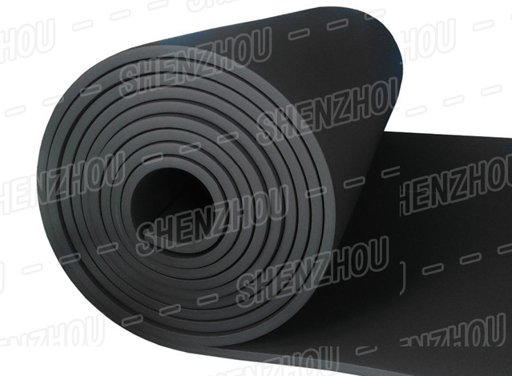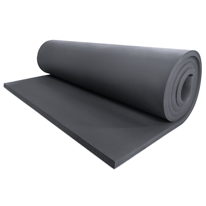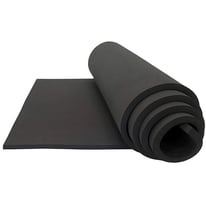
Advantages of foam rubber rolls
3/5/20245 min read

Categories
Popular
Glass Wool Insulation





The constituent makeup, manufacturing process, and intended uses of these two materials differ slightly. Foaming agents are used in the production of the foam substance to form an air-filled structure. In general, sponge rubber is composed of materials with an open or closed cell structure that are elastic and rubber-like.
What is the difference between foam rubber and rubber?





The advantages of foam rubber rolls
Lightweight: Foam rubber rolls are typically lighter than solid rubber due to their porous structure, making them advantageous in applications where weight reduction is desired.
Cushioning Performance: Foam rubber exhibits excellent cushioning and shock absorption properties, reducing the transmission of impact and vibration to protect items from damage.
Thermal and Sound Insulation: Foam rubber provides good thermal and sound insulation, suitable for applications requiring thermal insulation and noise reduction in construction and industrial settings.
Flexibility: The flexibility of foam rubber makes it suitable for applications that require adaptation to curved or irregular surfaces, such as padding or seals.
Environmental Friendliness: Some foam rubber rolls are made from renewable materials, resulting in lower environmental impact, and can be recycled and reused in some applications.
Versatility: Foam rubber rolls find applications across various industries including construction, automotive, electronics, packaging, transportation, and sporting goods due to their lightweight, cushioning, and insulating properties.
In summary, foam rubber rolls offer advantages such as lightweight construction, cushioning performance, thermal and sound insulation, flexibility, environmental friendliness, and versatility, making them widely used in many applications.
The constituent makeup, manufacturing process, and intended uses of these two materials differ slightly. Foaming agents are used in the production of the foam substance to form an air-filled structure. In general, sponge rubber is composed of materials with an open or closed cell structure that are elastic and rubber-like.
Solid Rubber:
Solid rubber refers to rubber that is in a dense, compact form without any air pockets or voids within its structure.
It is typically more durable and offers higher resistance to compression and wear compared to foam rubber.
Solid rubber is commonly used in applications where a strong, resilient material is needed, such as tires, conveyor belts, gaskets, seals, and industrial parts.
It can withstand heavy loads and is often used in environments where there is exposure to chemicals, oils, or extreme temperatures.
Foam Rubber:
Foam rubber, on the other hand, is a lightweight, porous material that contains numerous air pockets or cells within its structure.
It is softer and more flexible compared to solid rubber, offering cushioning and shock absorption properties.
Foam rubber is commonly used in applications where comfort, insulation, or impact absorption is required, such as in mattresses, upholstery, padding, packaging, and footwear.
It provides good thermal and acoustic insulation and is often used in applications where weight reduction is desirable.
In summary, the main differences between foam rubber and solid rubber lie in their density, flexibility, and applications. Solid rubber is denser, more durable, and suited for applications requiring strength and resistance, while foam rubber is lighter, softer, and provides cushioning and insulation properties.
SHENZHOU Group has been a pioneer in the development and manufacturing of insulation materials, including cutting-edge HVAC Rubber Foam. With a commitment to innovation and sustainability, SHENZHOU has played a significant role in shaping the landscape of modern insulation solutions.
The company's dedication to quality is evident in its AAAA-level quality control system, ensuring that every step, from raw material entry to product delivery and post-sales tracking, adheres to the highest standards. SHENZHOU's HVAC Rubber Foam products, with improved formulations and production techniques, offer enhanced thermal resistance (R-value), making them a preferred choice in the market.
In conclusion, HVAC Rubber Foam is a cornerstone in the efficiency and performance of modern building HVAC systems. SHENZHOU Group's contributions to the field have elevated the standards of insulation materials, providing solutions that are not only effective in thermal management and condensation control but also contribute to energy conservation and environmental sustainability. Consider HVAC Rubber Foam from SHENZHOU for your next project, and experience the advancements in insulation technology.

FAQ
1. Are you a manufacturer or a trading company?
We are a manufacturer which has 40 years' history.
2.Is your company OEM or ODM?
We not only make products, we design them.
3.Where is your manufacturer? How to visit it?
Our company is located in Dacheng town, Langfang City, Hebei province, China.Operating glass wool, rubber foam, ceramic wool, rock wool, sound-absorbing panels and other products.You can take a plane to Beijing, then take the subway for 20 minutes to our company.
4.How we control and ensure product quality?
We have a professional technical team and R&D center and have obtained many international certifications.
5.Can I customize the product?
Certainly! We are more than willing to accommodate customer requests. If you have any further inquiries, please feel free to reach out to us.


About Us
Click the button below to get more information about us
Newsletter
Click to subscribe for more information
Follow Us
Contact Us
Address
Dacheng town, Langfang City, Hebei province, China
Phone
+86 185 03165 626
